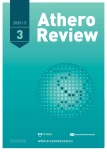LIPIcontrol 2 what has changed after 3 years
Authors:
Martin Šatný; Michal Vrablík
Authors‘ workplace:
Centrum preventivní kardiologie, III. interní klinika – klinika endokrinologie a metabolismu 1. LF UK a VFN v Praze
Published in:
AtheroRev 2020; 5(3): 185-190
Category:
Clinical Studies
Overview
Atherosclerotic cardiovascular disease (ASCVD) is the most common cause of morbidity and mortality, not only in developed countries. Cardiovascular (CV) risk is a continuum of action of partial risk factors, especially arterial hypertension, dyslipidemia, smoking or diabetes. With the deepening knowledge of ASCVD, the recommended procedures for CV risk management are constantly updated; especially in the field of dyslipidemia treatment – increasingly ambitious target values are required. However, the reality of clinical practice is often not ideal and a large proportion of the most risk patients do not have risk factors under control. The LIPIcontrol 2 project followed a similar project carried out in 2016 and again aimed to map epidemiological data on the incidence, treatment and control of AH/DLP in the Czech Republic. LIPIcontrol 2 therefore addresses not only the question of how the epidemiology of these two major risk factors has changed, but also the current clinical practice within 3 years after the publication of the results of the original project.
Keywords:
arterial hypertension – dyslipidemia – atherosclerotic cardiovascular disease (ASCVD) – LIPIcontrol 2
Sources
- Rozvoj technologické platformy NZIS. Zdravotnická ročenka České republiky 2018. ÚZIS. Dostupné z WWW: <https://www.uzis.cz/res/f/008280/zdrroccz-2018.pdf>.
- Vrablík M, Piťha J, Bláha V et al. Stanovisko výboru České společnosti pro aterosklerózu k doporučením ESC/EAS pro diagnostiku a léčbu dyslipidemií z roku 2019. AtheroRev 2019; 4(3): 126-137.
- Widimský J Jr, Filipovský J, Ceral J et al. Diagnostické a léčebné postupy u arteriální hypertenze – verze 2017. Doporučení České společnosti pro hypertenzi. Hypertenze KV Prevence 2018; 7(Suppl): 2–22.
- Šatný M, Tůmová E, Vrablík M. LIPIcontrol: daří se zlepšovat úroveň kontroly hlavních rizikových faktorů kardiovaskulárních onemocnění v každodenní praxi?. Hypertenze KV Prevence 2018; 7(1): 15–21.
- Dahlöf B, Sever PS, Poulter NR, et al. [ASCOT investigators]. Prevention of cardiovascular events with an antihypertensive regimen of amlodipine adding perindopril as required versus atenolol adding bendroflumethiazide as required, in the AngloScandinavian Cardiac Outcomes TrialBlood Pressure Lowering Arm (ASCOTBPLA): a multicentre randomised controlled trial. Lancet 2005; 366(9489): 895-906. Dostupné z doi: <http://dx.doi.org/10.1016/S0140-6736(05)67185-1>.
- Jamerson K., Weber MA, Bakris GL et al. Benazepril plus Amlodipine or Hydrochlorothiazide for Hypertension in High-Risk Patients. N Engl J Med 2008; 359(23): 2417-2428. Dostupné z DOI: <http://dx.doi.org/10.1056/NEJMoa0806182>.
- Bertrand ME, Ferrari R, Remme W.J et al. Clinical synergy of perindopril and calcium-channel blocker in the prevention of cardiac events and mortality in patients with coronary artery disease. Post hoc analysis of the EUROPA study. Am Heart J 2010; 159(5): 795-802. Dostupné z DOI: <http://dx.doi.org/10.1016/j.ahj.2009.12.042>.
- Kang S, Wu YF, An N et al. A systematic review and meta-analysis of the efficacy and safety of a fixed, low-dose perindopril-indapamide combination as first-line treatment of hypertension. Clinical Therapeutics [online]. 2004; 26(2): 257-270. Dostupné z DOI: <http://dx.doi.org/10.1016/S0149-2918(04)90024-0.
- Wiysonge CS, Bradley HA, Volmink J et al. Beta-blockers for hypertension. Cochrane Database Syst Rev 2017; (1): CD002003. Dostupné z DOI: <http://dx.doi.org/10.1002/14651858.CD002003>.
- Bangalore S, Kamalakkannan G, Parkar S et al. Fixed-dose combinations improve medication compliance: a meta-analysis. Am J Med 2007; 120(8): 713–719. Dostupné z DOI: <http://dx.doi.org/10.1016/j.amjmed.2006.08.033>.
Labels
Angiology Diabetology Internal medicine Cardiology General practitioner for adultsArticle was published in
Athero Review

2020 Issue 3
Most read in this issue
- Hypertriglyceridemia – today and tomorrow
- Genetic testing of familial hypercholesterolemia in clinical practice: statement of Czech Society for Atherosclerosis
- GLP-1 receptor agonists: antidiabetic agents with antiatherogenic effect
- Mendelian randomisation studies: principle and selected examples from cardiovascular medicine
